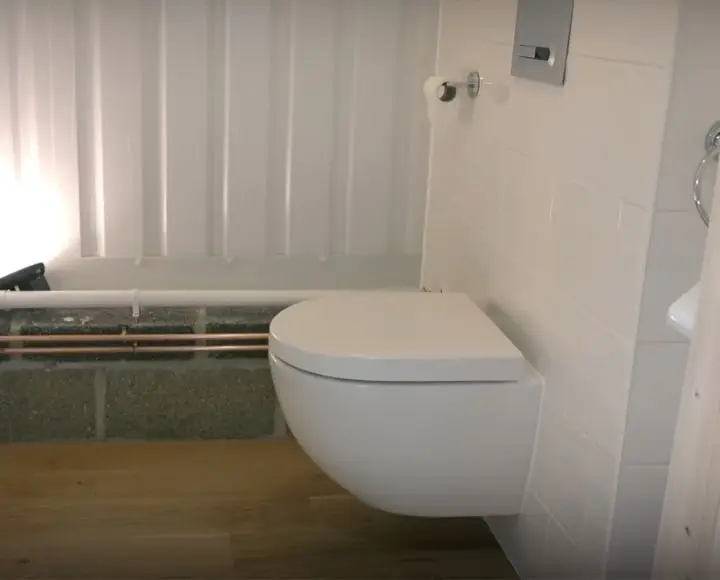If you are looking to free up a little space for a more minimalist bathroom, then the first step is obvious. You need to know how to convert a floor toilet to a wall mount. So, is it difficult to do?
Converting a floor toilet to a wall mount is basically a matter of severing the floor connection, sealing it, and installing a wall carrier to hide your tank before connecting up the pipes and sealing up your finished work.
So, are there really some significant perks to this kind of conversion? Is it less expensive and how will I house the tank to hide it? Well, stay with us, and we’ll tell you all about the whys of it and how to do it yourself. It’s a real space-saver, but there are a few things you’ll need to know before you get started!
Is it Worth it to Convert to a Wall-Mounted Toilet?
Depending on your needs, it might be VERY MUCH worth it to make this conversion, although to be sure we should go through some of the pros and cons to make sure that this is exactly what you want. First off, let’s look at the pros:
- Saving space – By moving that toilet up against the wall, you’ll be getting at least a solid 10 inches of extra space, which is always nice for making the bathroom feel more spacious. You also adjust the height to 15 – 19 inches for a bit of added comfort.
- Keeps you up to code – Depending on where you live, some local building requirements state that you need at least 21 inches of space in front of the toilet. A wall-mounted toilet definitely helps with this.
- Easy access to the tank – When you need to unclog the toilet, you can access the tank through a flush panel that you’ll be putting into the wall. It’s hidden, but still very much accessible.
Now let’s take a look at the cons of this process, just to keep things fair and balanced:
- Careful planning is required – You will be opening the wall, rerouting a waste pipe, and depending on the age of the building, you might need to relocate some fittings and you’ll need to measure the framing to pick a suitable tank. This could be an involved process.
- Expense – Wall-mounted toilets cost a few hundred dollars more than a standard floor-mounted model. You get extra space, but your initial investment might take a little budgeting to keep things practical.
Where Does the Tank Go With a Wall-Mounted Toilet?
The tank will be going behind the drywall, with access being had by means of a flush panel. As such, you’ll need to identify if you are using 2 x 6 or 2 x 4 studs to ensure that the framing will support the tank that you wish to use.
Don’t worry – manufacturers will have both types, you just want to check in advance to make sure that you get the right one.
How Do I Convert My Floor Toilet to a Wall Mount?
Now that you’ve considered the pros and cons, the rest of the installation is fairly straightforward. Here are the steps that you will need:
- You’ll need to remove the flange so that the original floor mounting may be dealt with.
- Next, you’ll need to sever the connection to the floor, so that you may cover up and properly seal the opening in the subfloor.
- Utilizing a steel frame, you will need to put the wall carrier in place behind the drywall so that it is properly supported and accessible.
- At this point, you’ll need to connect up the pipes so that they are attached to your drain pipes for proper flow.
- Now you will be ready to cover up and seal the portion of the wall that you’ve been working with. You can create a cutout with an inner hinge for easy access if you like or use another approach that allows you access without drawing too much attention.
Conclusion
So, there you have it in a nutshell! Converting your toilet from a floor mount to a wall mount can help to keep you up to code, by freeing up 10 extra inches of space in your bathroom and while the tank is in the wall, it’s certainly still easy to access.
While this is an expensive conversion, once it’s in place then you’ll have a more minimalist look and with that extra space, the bathroom should be just a bit more comfortable and welcoming for you and any visiting guests!
Just keep in mind that with older homes it may be a good idea to get a little professional help – sometimes with older installs, there is quite a lot you’ll have to work around, so it’s definitely worth considering a helping hand if this is the case with your home!
